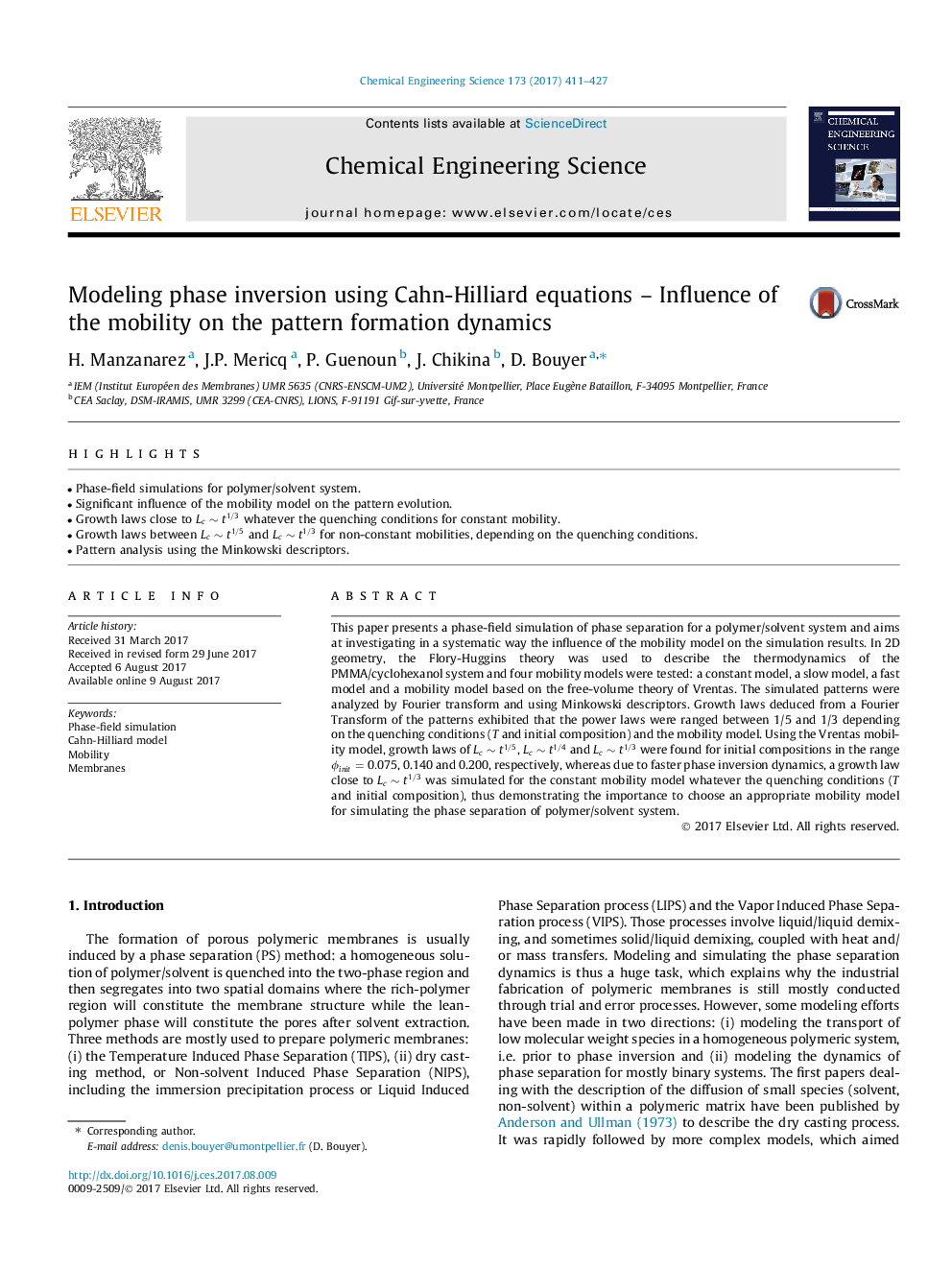| Article ID | Journal | Published Year | Pages | File Type |
|---|---|---|---|---|
| 6466832 | Chemical Engineering Science | 2017 | 17 Pages |
â¢Phase-field simulations for polymer/solvent system.â¢Significant influence of the mobility model on the pattern evolution.â¢Growth laws close to Lcâ¼t1/3 whatever the quenching conditions for constant mobility.â¢Growth laws between Lcâ¼t1/5 and Lcâ¼t1/3 for non-constant mobilities, depending on the quenching conditions.â¢Pattern analysis using the Minkowski descriptors.
This paper presents a phase-field simulation of phase separation for a polymer/solvent system and aims at investigating in a systematic way the influence of the mobility model on the simulation results. In 2D geometry, the Flory-Huggins theory was used to describe the thermodynamics of the PMMA/cyclohexanol system and four mobility models were tested: a constant model, a slow model, a fast model and a mobility model based on the free-volume theory of Vrentas. The simulated patterns were analyzed by Fourier transform and using Minkowski descriptors. Growth laws deduced from a Fourier Transform of the patterns exhibited that the power laws were ranged between 1/5 and 1/3 depending on the quenching conditions (T and initial composition) and the mobility model. Using the Vrentas mobility model, growth laws of Lcâ¼t1/5, Lcâ¼t1/4 and Lcâ¼t1/3 were found for initial compositions in the range Ïinit=0.075, 0.140 and 0.200, respectively, whereas due to faster phase inversion dynamics, a growth law close to Lcâ¼t1/3 was simulated for the constant mobility model whatever the quenching conditions (T and initial composition), thus demonstrating the importance to choose an appropriate mobility model for simulating the phase separation of polymer/solvent system.
